Wong Pi Klong (Thai Oboe and Drum Ensemble): From Muay Thai Music to Royal Funerals
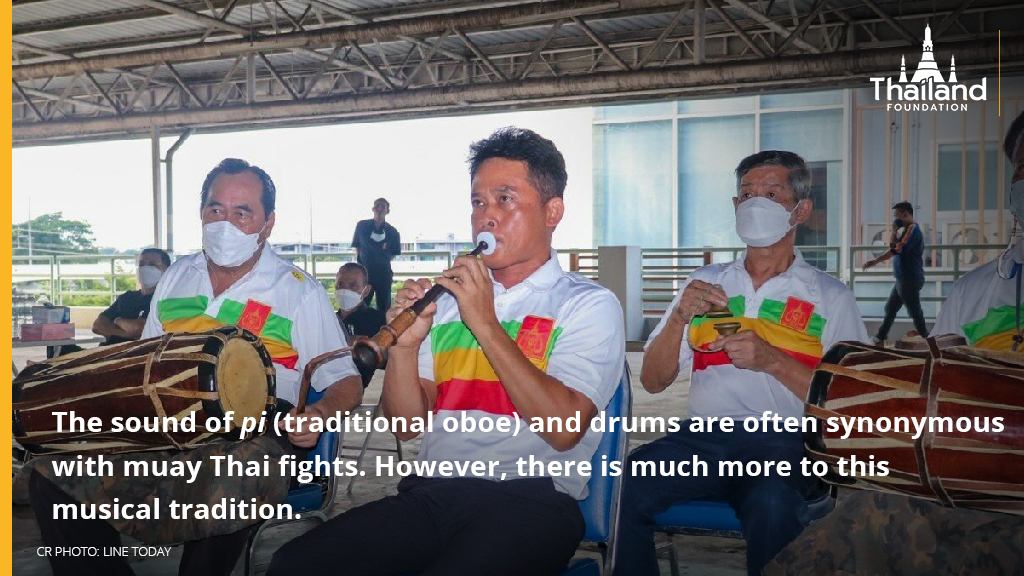
If you have seen a Muay Thai match, either on television or at a boxing ring, you must have heard the accompanying energetic yet exquisite music. You may be wondering what you are hearing. Well, in fact, the clear and penetrating melodies of this music is in fact is not confined only within a boxing ring. Let’s dive into the fascinating music of “Wong Pi Klong.”
What is “Wong Pi Klong”?
Wong pi klong [วงปี่กลอง] literally translates to “oboe and drum band”. “Wong” [วง] means a band while “pi” [ปี่] refers to reed instruments (similar to oboe), and “klong” [กลอง] means a drum. The composition of the band is straightforward, comprising mainly of the lead pi for the tune and klongs for beats. The unique sound of the pi is characterized by its flexibility. It can be powerful, sorrowful, or haunting as musicians wish. The band can be formed in many different ways with as many instruments as desired as long as the main instruments – pi and klong – remain the stars of the show, and thus the performance can serve a variety of occasions, such as Muay Thai fight, funeral, state function, or ordination ceremony. The music even serves as a status symbol. There are also times when the music itself takes center stage for pure entertainment!
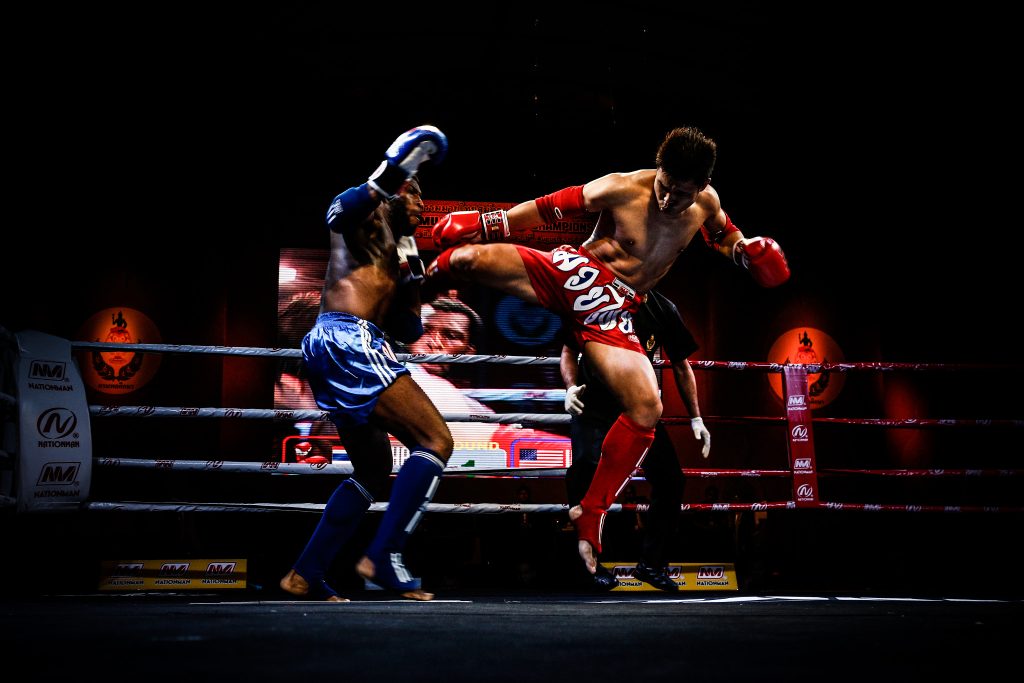
(Photo Credit: Gerrit Phil Baumann)
Types of Wong Pi Klong
- Wong Pi Chawa Klong Khaek [วงปี่ชวากลองแขก]
The instruments in the band consist of a pi chawa [Javanese oboe – ปี่ชวา] and one or two pairs of drums or cymbals. Klong khaek [กลองแขก] means an Indo-Malay drum.
In the Ayutthaya period (1351-1767), wong pi chawa klong khaek was a sacred music that Thais modeled from the Javanese-Malay royal court, which had been originally influenced by Indian musical tradition. In those days, this music was used in the royal processions and strictly reserved for the elite due to its loud and clear tone (signifying authority). Laymen later adopted this music and it became a part of common life.
Today, we can hear the music of wong pi chawa klong khaek in occasions such as Muay Thai fights and during the Royal Barge Procession. Each melody and verse carries a specific meaning that must be played precisely at a corresponding moment, such as at a different stage of Muay Thai fights, or a when the royal barge is about to dock.
Wong pi chawa klong khaek can also be combined with Thai string ensemble, or wong khrueng sai, to form the wong khrueng sai pi chawa. A form of string-woodwind combined ensemble, wong khrueng sai pi chawa took inspiration from Chinese style ensembles, which feature reed and string instruments.
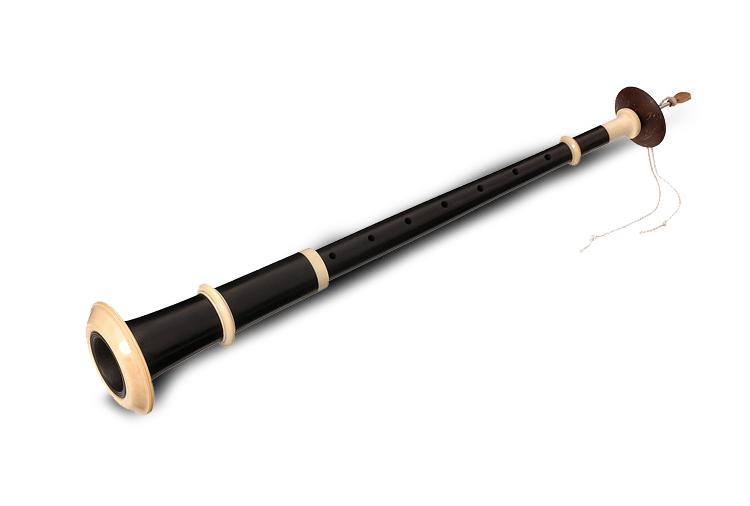
Pi Chawa
(Photo Credit: TKpark)
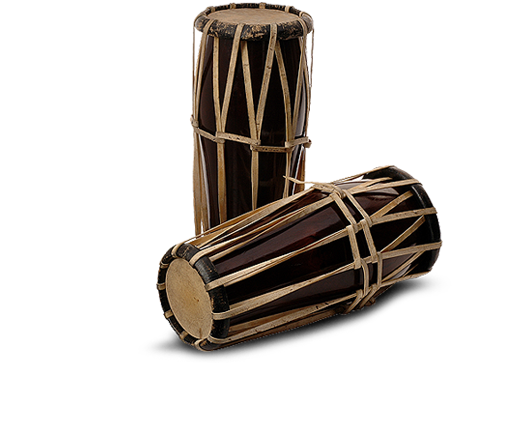
Klong Khaek
(Photo Credit: โรงเรียนอุลิตไพบูลย์ชนูปถัมภ์)
Wong Pi Chawa Klong Khaek
- Wong Bua Loy [วงบัวลอย]
Wong bua loy is an adapted version of wong pi chawa klong khaek, which requires fewer instruments: a Javanese oboe, a gong, and a pair of drums. The klong khaeks are substituted with a pair of klong malayu [Malay drums – กลองมลายู], which is played using a striking stick. In the past, the band would perform at royal funerals and festive events. Today, however, it is featured exclusively in funerals and is considered to be music for inauspicious events. Wong bua loy is also combined with wong piphat to form wong piphat nang hong, which is used exclusively at funerals as well.
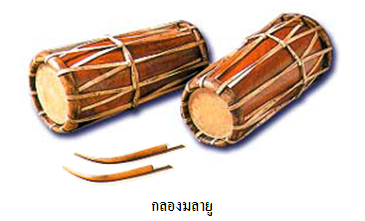
Malay drums
(Photo Credit: โลกดนตรี)
Wong Bua Loy played during a cremation ceremony
- Wong Pi Chanai Klong Chana [วงปี่ไฉนกลองชนะ]
This band, also influenced by Indian music, is performed to worship deities in sacred ceremonies. It consists of atleast five main instruments, namely one pi chanai [ปี่ไฉน] and four klong chana [กลองชนะ]. The band’s size, however, can vary from small to very large depending on status and the purpose of the event (such as royal processions, coronation ceremonies, and royal funerals).
The name “cha-nai” is derived from the Indo-Persian word “sa-ra-nai”, meaning a woodwind instrument with the end part shaped like a loudspeaker. This instrument originated in Persia and spread to Sri Lanka and Southeast Asia through India. “Klong chana” is a two-faced drum of Indian origins.
In royal ceremonies performed to bring fertility, wealth, and stability to the state, the number of drums can be tremendous. In some cases, kettledrums or bronze drums [มโหระทึก], which are traditional sacred instruments of Southeast Asia, are added to the band. In the royal setting, wong pi chanai klong chana is performed in royal processions, funerals, and royal patrolling, to name a few. Meanwhile for non-royals, the ensemble will play at the funerals of nobles and high ranking officials.
Wo Pi Chanai Klong Chana played at a funeral of a high-ranking government official
- Wong Klong Yao [วงกลองยาว]
A long drum or klong yao [กลองยาว] is a single-faced drum. The body of the drum is long with the end part shaped like a loudspeaker. Klong yao is very popular in every part of Thailand as a form of entertainment in various auspicious events, especially wedding parades, and religious processions. Attendees usually dance and sing along to the beat of the drum.
Wong Klong Yao consists of up to 10 drums, or even 14-20 drums, which create a fun repetitive rhythm to complement melodies from other instruments, with singers chiming in with funny, flirty, and ambiguous lyrics. Wong klong yao (a long drum band) is not strictly wong pi klong because the main elements are klong yao and percussions such as cymbals, wooden clappers, and gongs. Oboes can, however, be added to the band according to preference and regional customs, making these instaces of wong klong yao a form of wong pi klong. Klong yao was registered as a national intangible cultural heritage of Thailand in 2015.
Wong Klong Yao featuring Pi Chawa
- Wong Mangkhala [วงมังคละ]
Mangkhala [มังคละ] drum is an ancient instrument found mainly in Sukhothai and Phitsanulok provinces. Its instrument means “auspicious drum”, and it produces a high-pitched, resonant sound. The mangkhala is featured as the leading instrument in wong mangkhala (literally meaning “mangkhala band”), alongside a specialized oboe called pi mangkhala [ปี่มังคละ]. The band is characterized by its upbeat rhythm, and thus, are suitable for festive events such as Songkran, Thai New Year, or ordination processions. The auspicious name of the leading instrument also gave wong mangkhala the connotation of being a sacred/luck-bringing music.
Wong mangkhala comprises of a mangkhala drum, a pi mangkhala [ปี่, two-faced drums, gongs, and cymbals. It takes two people to play the mangkhala drum. The first person carries the drum and dances to the music. The second person beats the drum with rattan rods. In total, a full band performance requires around 8-12 musicians and dancers.
Nowadays, mangkhala band is a rare sight. Some elementary schools have formed mangkhala clubs where young students can learn and preserve the art form.
Wong Mangkhala
- Wong Toob Keng [วงตุ๊บเก่ง]
Toob keng [ตุ๊บเก่ง] is an old folk music of Phetchabun province and is performed to increase spiritual powers of the rituals and dances. Toob keng is an onomatopoeia based on the sound of two important instruments: “Toob” is the sound of the local drum and “keng” is the sound of the gong.
The instruments in Wong Toob Keng are a pi, two drums, and three gongs. It takes five players to perform. The pi of toob keng is similar to the pi used in the mangkhala band. The melody range of the band is narrow and low-pitched, using the Pi as the lead instrument, which must be played continuously throughout the song. The music piece played is simple and uncomplicated, with verse being repeated over and over again.
In the past, Wong toob keng was played at both auspicious and inauspicious ceremonies, but nowadays, it is played mostly at funerals as people believe that the music will guide the souls of the deceased to heaven.
Wong Toob Keng
Wai Khru: Reverence for Teachers
Another notable aspect of wong pi klong is the value of respect that permeates every aspect of the Thai culture. Music, with its ability to appeal directly to human emotions, is believed to have originated from the gods. The knowledge is then passed down through countless generations of musicians who add on to the craft. This line of predecessors leading back to divine figures is what Thai musicians revere as their “teachers”. Instruments of music are, therefore, treated with respect, as the represent sacred tools passed down from teachers. As with other Thai performance arts, the wai khru (teacher reverence) ceremony is always performed before the band starts playing. This ceremony can vary in details depending on the type of band, but the main purpose is to remind musicians to respect the instruments and their teachers.
More than Melodies
Wong pi klong is more than a form of music. It is true that the main purpose of music is to brighten up emotions and create atmosphere for personal enjoyment and special celebrations, but at the same time, music can also uplift the mind, even to a spiritual state. As such, wong pi klong, can be seen a tool to connect mortals with the supernatural and the divine. The sacred haunting sound of pi and the trance-inducing rhythm of drums compliments rituals, such as the wai khru dance of Muay Thai and the sending off of deceased loved ones.
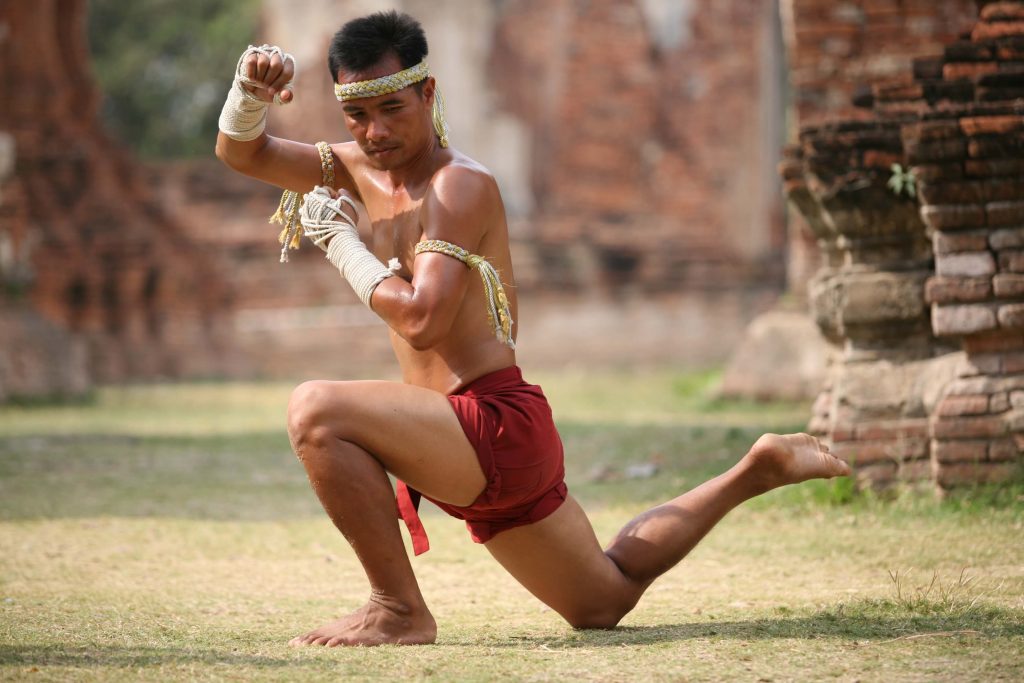
Wai Khru in Muay Thai
(Photo Credit: Tourism Authority of Thailand)
Wong pi klong is also a social status symbol. The resonant sound of pi and the powerful beats of the drums make a statement power for those the music is performed for. Just look at the grandiosity of a royal wong pi chanai klong chana procession. The cheer number of performers, as well as the pageantry of the show, is guaranteed to leave any spectators in pure awe.
Moreover, each of the wong pi klong forms reflects the rich and diverse cultural heritage of Thailand. Some are best used to express sorrow, while others enliven joy. Some are reserved for the royal court, while others gain popularity among the people. Some, like wong mangkhala and wong toob keng, expresses the story and pride of local communities.
Conclusion
Needless to say, Thais have music in their souls. Any Thai ceremonies, you name it, are not complete without music. This is because we Thais are naturally cheerful and optimistic, and we know how to appreciate music. However, we do not live only for fun; we also value respect and etiquette. As such, a wai khru ceremony is always a mandatory prologue to any artistic performance. The ceremony helps performers to remember the contributions of their teachers and remind all spectators that the music we enjoy comes from sacred sources.
Another way wong pi klong reflects the characteristics of Thai people is through openness. The ensemble is influenced by the Indian, Javanese, and Malay cultures that came tothe Thai people through cultural exchange an openness towards immigrants. This reminds us that the Thai people are open to other cultures and beliefs, and integrate them perfectly into their traditions, rituals, and way of life.
The story of “wong pi klong” is a classic facet of Thai culture and heritage. We saw how the essence of Thainess is represented refinedness (the appreciation and integration of music into different aspects of life), respect (reverence for the arts and teachers), and openness (diversity and welcoming attitude towards outside cultural influences). Join us in exploring more stories of Thailand and the Thai people, as we take you on a journey to discover Thainess.
Sources
- https://www.matichon.co.th/news-monitor/news_396790
- https://www.matichon.co.th/columnists/news_329686
- https://www.matichon.co.th/entertainment/news_335364
- http://ich.culture.go.th/index.php/th/ich/237-music/775–m-s
- http://ich.culture.go.th/index.php/th/ich/performing-arts/236-performance/260—–m-s
- https://www.youtube.com/watch?v=PvJzS7Z8o_4
- https://bit.ly/2PINiYB
- https://www.youtube.com/watch?v=lNxQhmdbLuM
__________________________________________________________________________________________
Written by Soonyata Mianlamai
Edited by Tayud Mongkolrat
6 December 2022


